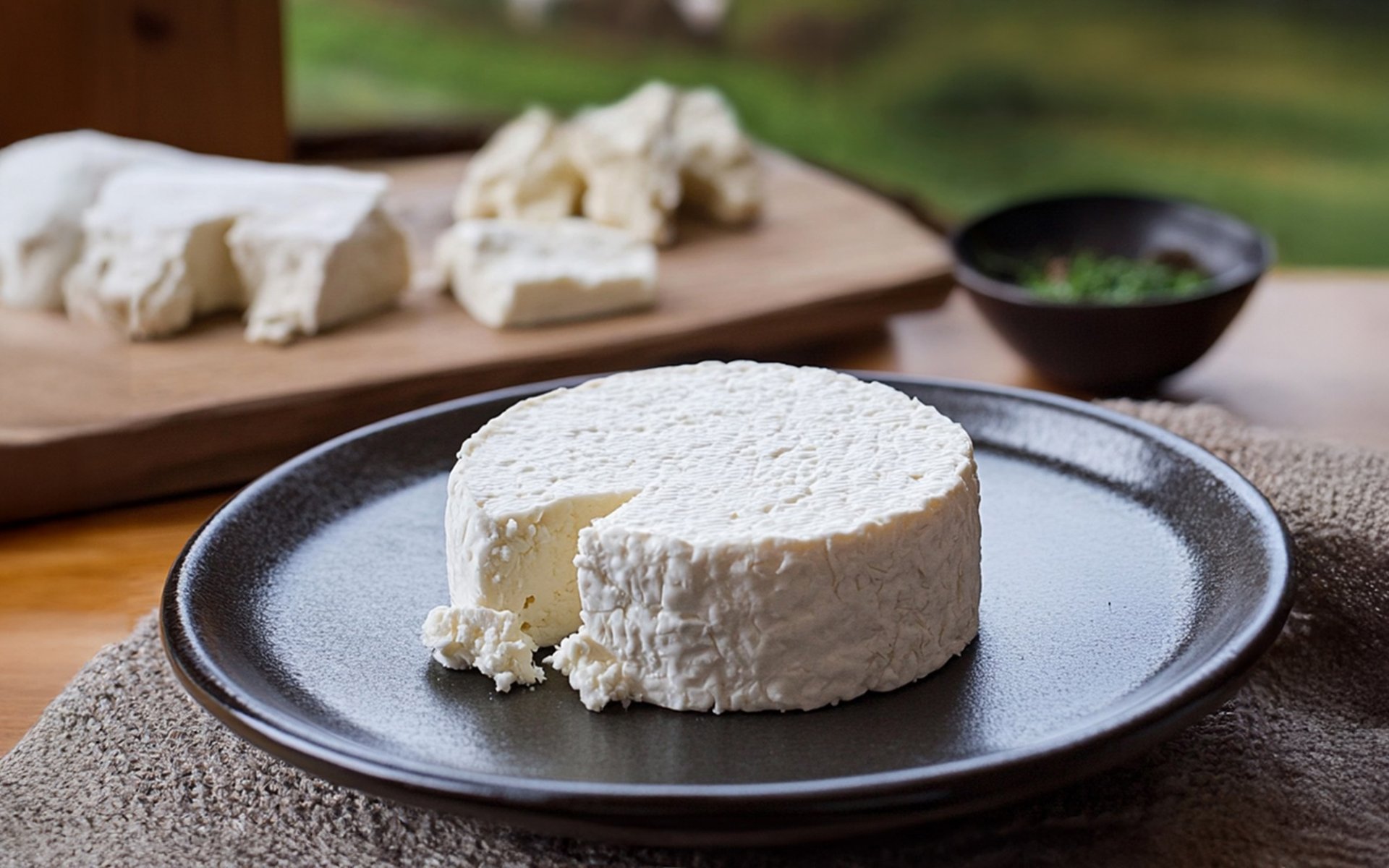Goat Cheese

Goat cheese stands as one of the world's oldest dairy products, with a history of production and consumption dating back to ancient times. Historical evidence confirms that humans began producing cheese from goat's milk as early as the Neolithic period, approximately 7,000 years ago. During this era, goats were often favored over other livestock because of their resilience and adaptability to various climates, even in conditions where cattle and sheep could not thrive. This made goats a primary source of milk for early cheese and other dairy products.
Origins in the Fertile Crescent and Mediterranean Spread
The story of goat cheese production is believed to have originated in the Fertile Crescent, a region encompassing parts of modern-day Iraq, Syria, Lebanon, Israel, and Jordan. This area was a crucial cradle of ancient civilizations and the birthplace of agriculture and animal husbandry. It is thought that early humans discovered the process of making goat cheese by accident, perhaps from goat's milk stored in containers made from animal stomachs, which contained the enzyme rennet that caused the milk to curdle. From this accidental discovery, they began to develop the cheese-making process for food preservation, a vital practice in an era without refrigeration.
As ancient civilizations expanded, knowledge and techniques for producing goat cheese spread rapidly across the Mediterranean region. The ancient Greeks, who had a particular fondness for goat cheese, played a significant role in developing and introducing it to other civilizations through trade routes and travel, making goat cheese an integral part of the wider culinary culture.
Beyond the Greeks, the Romans also cherished goat cheese. They developed more sophisticated cheese-making methods, particularly in terms of aging and storage techniques, which allowed for a broader range of flavors and textures. This enabled them to enjoy goat cheese in various forms, be it fresh, aged, or incorporated into cooked dishes. Goat cheese consequently became an important commodity, widely traded throughout the Roman Empire, demonstrating its economic and cultural value.
Goat Cheese in the Middle Ages and Renaissance: Developing Unique Identities
As the Roman Empire expanded into Europe, the production and consumption of goat cheese also increased. During the Middle Ages, goat cheese production began to become more specialized. Various regions in Europe, particularly in France, started developing their own unique cheese-making styles and techniques, reflecting local climate, geography, and goat breeds. This evolution led to a rich diversity of goat cheeses with distinct characteristics.
By the Renaissance, goat cheese began to be recognized as a delicacy, widely consumed among the aristocracy and those with refined palates. Even though cow's milk and sheep's milk cheeses were also present during this era, goat cheese maintained its unique characteristics, ensuring its continuous demand.
Unique Characteristics of Goat Cheese
Texture: Often has a firm yet crumbly texture, offering a creamy mouthfeel.
- Lower Lactose: Goat cheese generally contains less lactose than cow's milk cheese, making it a more digestible option for individuals who are lactose intolerant or have difficulty digesting lactose.
- Intense Flavor and Distinct Aroma: It possesses a noticeably more intense flavor than cow's milk cheese and a unique aroma that many compare to nuts or certain fruits like pear or mango. This distinct scent originates from the short-chain fatty acids present in goat's milk.
The Diversity of European Goat Cheeses and Expansion to the New World
In Europe, particularly in France, goat cheese has been developed into numerous regional varieties, each with its own history, flavor, and characteristics. Examples include:
- Chèvre: A general term for goat cheese in French, often characterized by its soft texture and fresh, tangy flavor.
- Crottin de Chavignol: Small, round cheeses with a bloomy white rind, often paired with white wines.
- Valençay: A truncated pyramid-shaped cheese coated with ash, typically with a slightly tangy taste.
- Banon: A cheese wrapped in chestnut leaves and tied with raffia, known for its unique aromatic qualities.
Some of these cheeses are also protected by the Appellation d'Origine Contrôlée (AOC) system, a certification of origin and quality, underscoring the significant cultural and economic importance of goat cheese in France.
During the Age of Exploration and Colonization, European explorers and settlers journeyed to the New World, introducing the knowledge of goat cheese production. This brought goat cheese to the Americas, where it gained particular popularity in areas with climates unsuitable for dairy cows, such as the arid regions of Mexico and the Southwestern United States, due to the goat's superior adaptability to challenging environments.
Goat Cheese Today: Global Production and a Sustainable Future
Today, goat cheese is widely produced across the globe, especially in Europe, North America, and Australia. France remains one of the largest producers and consumers of goat cheese, boasting over 100 varieties officially recognized by the French government, reflecting its rich diversity and proud culinary heritage.
Goat cheese is not only a delicious and unique product but also a symbol of a long history of human adaptability, creativity, and wisdom in utilizing natural resources to create valuable and sustainable food.


